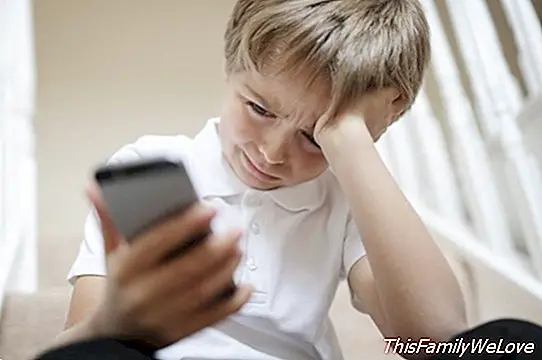Children who access smartphones before, more likely to suffer harassment

The bullying it is one of the most serious problems facing society today. Curbing this issue has become one of the priorities of educational agents, however with the new times, this problem has increased as a result of the implementation of new technologies and the Internet.
The anonymity and the possibility of maintaining constant contact with the victims means that cases of bullying. In fact, there are those who question the usefulness of allowing access to new technologies in younger generations as this may mean opening doors to cyberbullying. According to researchers at Bridgewater State University in Massachusetts, children who previously access smartphones are often more likely to be victims of these cases.
Victims and stalkers
To reach these conclusions the researchers gathered a group of almost 4,600 students of different courses to whom a questionnaire was made about the use of new technologies and their relationship with cyberbullying, whether they were victims of it or if they were the ones who exercised bullying among their peers taking advantage of the anonymity offered by the network.
The results showed that junior students with smartphones were much more likely to be victims of online bullying. At the same time, the presence of these technologies in young people also increased the likelihood that they would become cyberbullies themselves. Some results that give a touch of attention to parents, who must take into account many factors before granting one of These devices to his children.
Through smartphones children have the opportunity to access a world in line, in which they can be involved both positively and negatively. An aspect in which the relationship with his colleagues stands out through social networks and applications of instant messaging. This constant access increases the likelihood that students will send or receive texts or impulsive messages.
Therefore, the authors of the study advised parents to take into account the potential dangers that smartphones can have for children of an early age. "Many parents often mention the benefits of giving their child a smartphone, but our research suggests that giving those devices to young children could also bring unforeseen risks", explains Elizabeth Englander, one of the authors of the study.
What you should keep in mind before buying
Is there an appropriate time to accept the repeated request of our children to have their own smartphone? As in all fields of education, there are no magical recipes. Parents must analyze with judgment All the aspects that come into play before buying a smartphone for our children:
- Need for the smartphone. It may be necessary under certain circumstances to have a first mobile phone. Many parents feel more secure if their children can communicate with them, for example, because they travel alone long distances to attend class or practice sports in late hours. But if there is no real need, we must stop the impulse of desire as long as possible.
- The whole group has it. The problem that arises as parents is that smartphones are the new communication systems of our children with their environment. We will have to assess at what point it may be more harmful for them to keep them away from their peer group than to prevent them from accessing the networks.
- Personal maturity. One of the indicators that will allow us to check when our children can have a phone will be the degree of personal maturity. We need to make sure that they have reached that maturity because, once they have the device in hand, there will be no way to put doors to the field. So we must have trained them for critical thinking that allows them to choose the good and discard the bad.
Damián Montero




